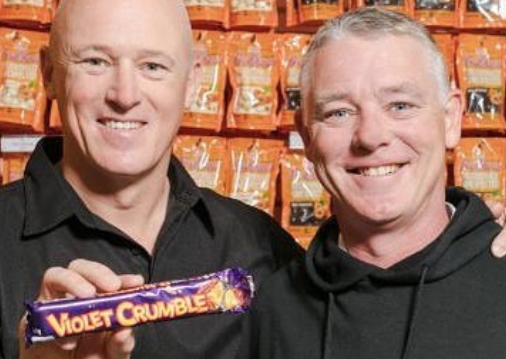Violet Crumble is quintessential brand-driven nostalgia, but do millennials care?
There are some brands you can’t help but feel nostalgic about – if you’re Gen X, that is. Inside Out PR’s Nicole Reaney explains why invoking a sense of nostalgia in the millennial generation might be more difficult than you’d expect.
It certainly was a good news day when headlines broke confirming that Aussie favourite, Violet Crumble, would receive a new lease on life after an acquisition from Nestle by fourth-generation confectionery business, Robern Menz.
The purple and gold branding, the crackling of the packet and memories of being passed a cube where the edges of chocolate would be methodically nibbled before crunching into the golden honeycomb.



I’m curious why our industry often thinks that the only audience of commercial value is millennials? I’m being lazy here and not digging out exact stats, but I know that baby boomers and Gen X is where the money is right now, and with a brand already known and loved by this target surely nostalgia is a smart way to go?
I for one think that the nostalgia angle is going to work a treat for an already passionate audience and with more open minded millenials open to experience good stuff from any era, any genre, then it may well create their own nostalgia in the future. I’m surrounded by millenials and they’re a wonderful mix of retro, pre-loved and contemporary.
I don’t enjoy a slagging off for a brand before they’re out of the gates. With respect, surely that’s not good PR?
Go for it Violet Crumble – I have envy to be working on a brand that loved BEFORE a re-launch. Surely it can only go up?!
Couldn’t agree more Anne!
I know I sure am nostalgic…
for the time when guest articles in trade press actually had an argument to them. A hypothesis they’d lead with, then follow through in the rest of the article. Or even a paragraph with a topic sentence. Instead of 500 words of… words.
I expected this would be an opinion piece
Seems to be an observation with no committed conclusion. Regardless, it – and we at times – miss the reality that some marketers do achieve what we don’t expect and predict they cannot, because they are simply better judges, smarter with the comms footwork; and good on ’em
Oh, and all-around, from confectionery to furniture, to many-things-we-make, let’s for all of our sakes in the world of comms, hope price-is-everything and “I’ll only change brands if another is 30% cheaper” [note – not better value] takes a big tumble. Otherwise PR and ad hacks will all be concentrating solely on discount messages
and the likes of Mumbrella acquired by an [un]official offshoot of the Chinese govt. Thus, they who wok for them now will be jobless
What IS the eminent PR personage’s OPINION…?
chrism
Violet Crumble, man? Like, how do you turn it on?
It will be interesting to see what transpires next generation. There certainly is something magical in flipping through old ads and products.
Polly Waffles! There sure is a difference in generations and food choices available.
As people grow up in increasingly brand saturated environments they become increasingly oblivious to how much they rely on them.
Each generation is less marketing savvy than the generation before.
Mellenials are like fishing in a barrel.
What’s next? Bringing back Caley’s chocolate bars from World War One? We’ll dig up Grandma and she can buy one.